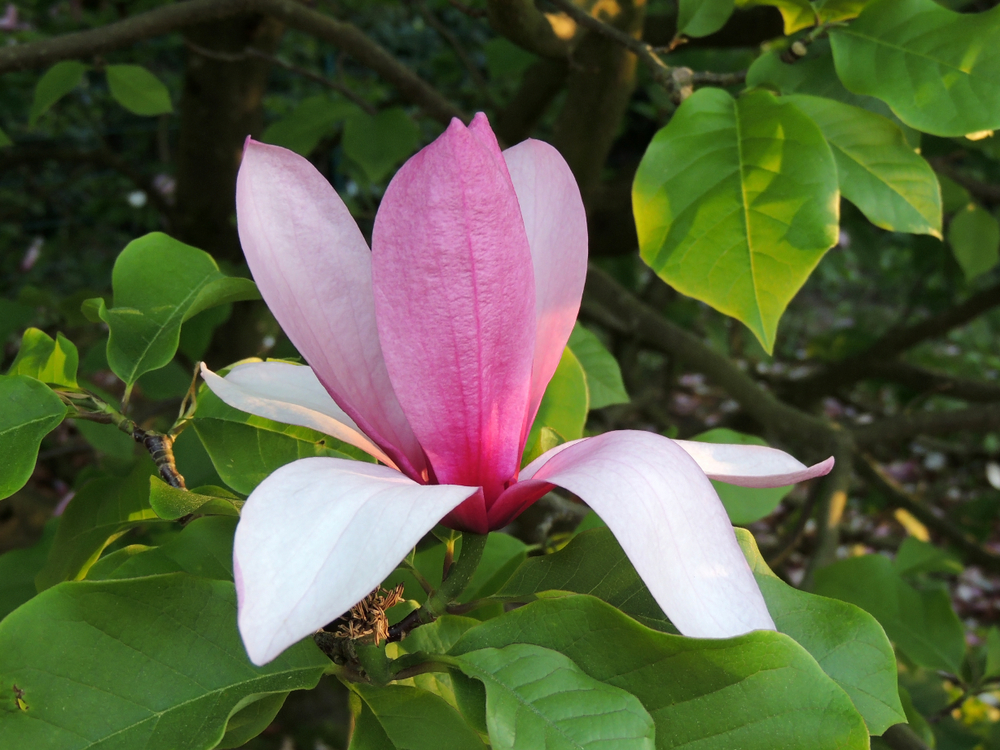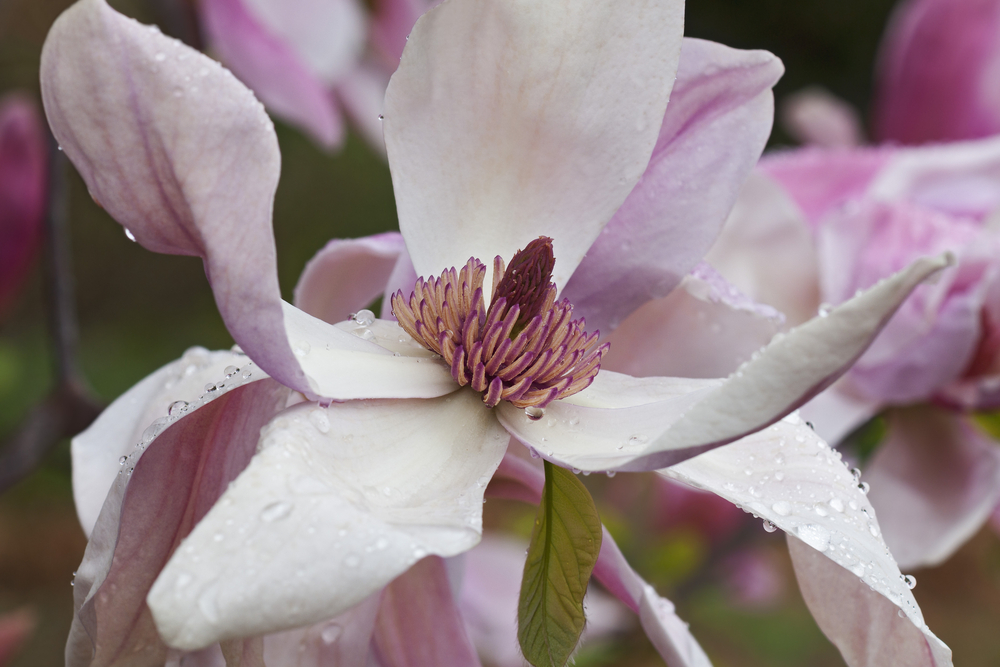13 Best Magnolia Trees That Money Can Buy

There’s nothing quite like a magnolia to herald the start of spring, and with winter on the way out, you may be looking to these magnificent – and varied – plants to bring a little life back into your backyard.
Available in a variety of sizes and aesthetics, magnolias are a great fit no matter what you’re looking for, and with their shallow root systems they can even find a home in urban gardens as they won’t disturb foundations, underground pipes, or pathways.
To help you choose the magnolia for you, we’ve put together a list of some of the very best magnolia trees for your garden – but if magnolias aren’t your thing, you can check out our favourite elms and palm trees instead!
How to care for your magnolias
Before we dive into the list, let’s take a quick look at how best to care for your magnolia trees.
When looking for the perfect spot to plant your magnolia, keep an eye out for sunny spots that also offer a little bit of wind protection. They can tolerate cold up to about -5˚c, which will likely be fine for most Australian gardens, though you’ll need to take into account cold winters and any shade around the plants.
Because magnolias come in both deciduous and evergreen varieties, it’s important to plant at a time and in an area suitable for the type of magnolia you’ve chosen. Evergreen magnolias flower throughout the year and do best when planted in early spring. Deciduous varieties should be planted when they’re dormant and will do well when planted in late autumn and earlier winter.
Be sure to check the pH levels of your soil ahead of planting. Magnolias prefer more acidic soil, usually sitting around pH 5-6. They share this love of acidic soil with other plants such as camellias, hydrangeas, and azaleas – this might give you an idea of what else you can plant alongside your magnolias.
Neutral levels won’t hurt them too much, but if your soil leans heavily towards alkaline (over pH 7), you’ll need to look at amending the soil, which can be tricky.
The good news is that, once planted, your magnolia won’t require too much maintenance. Annual mulching and feeding with an acid-balanced fertiliser in the spring months is a must, and you’ll need to keep an eye on water levels, especially during the first couple of years. Pruning is generally optional, though you may want to shape it a little when it’s younger, and there are few diseases and pests you’ll need to worry about when it comes to these tough trees.
If you’re still all aboard the magnolia train, read on for our suggestions for the very best!
Our 13 favourite magnolia trees
Little Gem
Part of the Southern Magnolia family, the evergreen Little Gem is a compact version of its Bull Bay counterpart, achieving heights of around 4-6m, compared to the Bull Bay’s 18-25m. It can grow to 2-3m6 wide.
Great as a standalone plant or as part of a hedge, it boasts a dark green foliage of smooth and shiny oblong leaves. Lightly scented white flowers bloom from late spring to mid-summer, at which point the older leaves will drop and need to be cleared away.
Teddy Bear
Teddy Bear is another member of the evergreen Southern Magnolia family, similar in height to the ‘Little Gem’, but a little narrower. Small and compact, it grows quickly in sub-tropical climates, and loves full sun.
The Teddy Bear boasts beautiful bronze leaves and large white flowers, but be aware that the leaves will brown at the edges if it doesn’t get enough water during the hotter months.
Fairy Magnolias
Fairy Magnolias are a relatively new evergreen magnolia hybrid bred in New Zealand. They’re ideal for use as a flowering hedge or as a specimen tree in smaller spaces, growing to a height of 2-4m and a width of 1-2m.
Fairy magnolias cover themselves in a blanket of fragrant flowers every spring, and can be pink, cream or white depending on the variety. Individual flowers can appear all year round, and provide a lovely contrast against the green foliage.
Kay Parris
 Image from Arborwest Tree Farm
Image from Arborwest Tree Farm
Another from the grandiflora/Southern Magnolia family, the Kay Parris produces large cream-coloured flowers throughout the warmer months. For a few days, the heavily scented flowers will open in the morning, before closing again at night. Its wavy evergreen leaves are a shiny green on top, and a deep brown underneath.
Fast-growing, it can reach up to 6m tall and 3m wide, making it a perfect tree for year round privacy screens.
White Caviar (Magnolia laevifolia)
Image from TGA Australia
A medium sized evergreen shrub, the White Caviar boasts creamy white flowers with a pink centre during spring and summer, providing a pop of colour against glossy green leaves.
Reaching up to 4m with a width of 2m, the White Caviar is a great choice as a standalone specimen plant or as part of a dense hedge, as it tolerates pruning and shaping very well. This also means it’s a good option for compact spaces, providing both beauty and fragrance in a small area.
Bubbles
Image from Warners Nursery
A cross of magnolia doltsopa and michela figo, Bubbles is a small evergreen magnolia tree. White flowers with pale pink borders bloom during late winter and spring, with glossy pointed leaves year round.
Reaching a height of 4m and a width of 3m, Bubbles is great as both a hedge and a statement plant.
Elizabeth
First introduced in the 1970s, the yellow flowered Elizabeth makes a beautiful statement tree, reaching heights of up to 9m and a width of 6m.
As a deciduous tree, the Elizabeth magnolia flowers in early to mid spring and last up to four weeks. The large yellow flowers fade to cream as they age, with glossy oval leaves that change from dark green to golden-yellow throughout the seasons.
Centennial
The Centennial magnolia is a wonderful medium size shrub/small tree, reaching up to 6m and can be as wide as it is tall. A spectacular specimen plant, it boasts dramatic flowers and medium green leaves, which turn yellow and brown in autumn.
During late winter and early spring, masses of large water lily shaped flowers appear, each boasting around 30 white petals with a pinkish tinge. The flowers’ starburst-like visual gives the tree the nickname ‘Star Magnolia’.
Galaxy
A cross between magnolia liliiflora and magnolia sprengeri ‘Diva’, the Galaxy magnolia provides a long-lasting display of dark pink flowers. Bursting from deep red buds, the flowers can reach up to 20cm across, and their late spring arrival means they can avoid any lasting cold and stay on show for longer.
Reaching heights of 9-12m with a width of 6-8m, the deciduous Galaxy has an oval canopy of dark green leaves when not flowering, making it a spectacular standalone plant throughout the warmer months.
Daybreak
With fragrant rose-pink flowers reaching a huge 25cm across, the Daybreak is a wonderful statement magnolia that blooms in mid to late spring. Elliptical green foliage appears later in the year, before the deciduous tree enters its dormant phase during the colder months.
Reaching up to 12m tall and 5m wide, it’s also tolerant to pollution, making it a great choice for adding colour and scent to urban gardens.
Star Wars
The award-winning Star Wars is a small magnolia tree, reaching up to 5m tall and 6m wide.
Flowers bloom in mid to late spring, gradually opening up to an astonishing 28cm across, with a deep pink base gradually lightening to a pale pink on the tips of the petals. The flowers appear just before the large, glossy leaves emerge in the spring, and can last for up to two months. A second flush of flowers may occur during the autumn months.
Nigra
Known as the purple lily magnolia, the Nigra Is a deciduous shrub/small tree with dark reddish and purple upright flowers. Primarily flowering in spring, it may bloom sporadically throughout the summer months.
Originating in Japan back in 1861, the Nigra magnolia makes for an elegant specimen tree. You can expect the Nigra magnolia to read a height of 2-4m, with a similar width.
Saucer
There are many varieties of the Saucer magnolia, and there’s sure to be a size perfect for your space. All of them produce beautiful goblet shaped flowers in varying shades of white, pink, and purple.
Some of our Saucer favourites include the Lilliputian which, as its name suggests, is a great size for container planting and smaller gardens, and the Lennei. with its deep pink/purple flowers.
Which magnolia is right for you?
This is just a small selection of the huge number of magnolia trees and shrubs you can choose from, and a quick internet search will turn up plenty more! But which one will be right for you?
Ultimately, that decision really comes down to the available space, what type of colours you’d like to see, and whether you want an evergreen or a deciduous variety. If you’re still torn, you can always reach out to an expert for more information!
References
- 2007, “Magnolias”, Gardening Australia, ABC
- 2021, “10 Magnolia tree varieties to know”, Homes to Love
- 2021, “How to grow and care for magnolias”, Homes to Love
- “Magnolia – Fairy Magnolias”, Anthony Tesselaar Plants
- “Growing, pruning and caring for magnolia trees”, Bunnings
- “Magnolia ‘Daybreak’”, Gardenia
- “Magnolia ‘Elizabeth’”, Gardenia
- “Magnolia ‘Galaxy’”, Gardenia
- “Magnolia ‘Star Wars’”, Gardenia
- “Magnolia grandiflora ‘Kay Parris’ (Southern Magnolia)”, Gardenia
- “Magnolia grandiflora ‘Little Gem’ (Southern Magnolia)”, Gardenia
- “Magnolia liliflora ‘Nigra’”, Gardenia
- “Magnolia stellata ‘Centennial’ (Star Magnolia)”, Gardenia
- “Saucer Magnolia (Magnolia x soulangeana)”, Gardenia
- “Magnolia laevifolia x figo ‘White Caviar’ (SYN. Michelia)”, TGA Australia
- “Magnolia ‘Bubbles’”, The Tutu Guru
- “Magnolia ‘Teddy Bear’”, Oxley Nursey

















